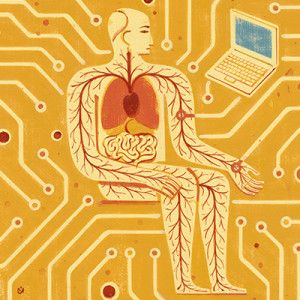A new technology, bioelectric impedance cardiography (ZCG), which assesses blood flow in the chest to make inferences about heart function, may lead to a new way to identify heart problems. Now, with the help of the Health Sciences Emerging Scholars grant, George Washington University’s Josh Woolstenhulme, Ph.D., D.P.T., looks to prove the effectiveness of that technology.

Woolstenhulme, an assistant professor in the Department of Physical Therapy and Health Care Sciences, explains that ZCG is different from traditional tools used to assess heart function because it relies on the electrical impedance of blood in the chest to determine how much blood is pumped out of the heart during each beat.
The primary focus of Woolstenhulme’s project is to validate the use of ZCG to assess diastolic function — the part of the heart cycle when the heart is between beats and filling with blood — while a patient is at rest, and while he or she is exercising. Validating the technology for this purpose might enable clinicians to better identify the presence of diastolic dysfunction.



